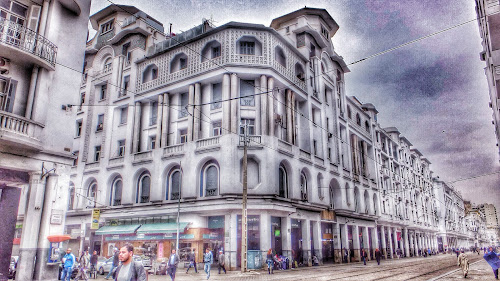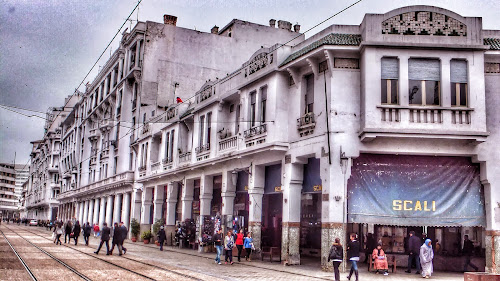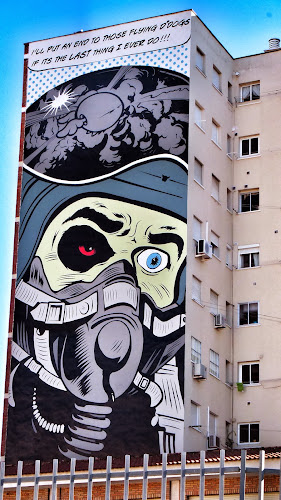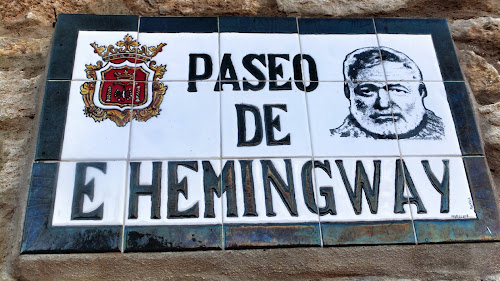Our first days of rain in weeks. It has given us a ready excuse to take refuge in Antequera's tapas bars but also provided the opportunity for some nice night photography. I like the drops of rain on the lens which leave their traces, the shimmering roads and the way the rain can have the effect of emptying places of people and vehicles often producing a lonely, eerie, "romantic" atmosphere.
Between downpours, which were never too long or too hard, I'd sneak out with my camera. By morning the rain had receded and I climbed up to the Alcazaba (the old Muslim fortress) which was captured by Ferdinand I of Aragon in 1410.
I know the story of the lovers associated with that rock in the background of the next photo...
It is a view of El Torcal, or "the lovers rock", which dominates the fertile countryside between Antequera and Boabdilla in Andalucía. It is seen through the Moorish window frame from one of the Alcazaba's towers, its Muslim fort.
The original legend is that two young Moorish lovers from rival clans threw themselves from the rock while being pursued by the girl's father and his men.
This romantic legend was adapted by the English poet, Robert Southey, in his, "The Lovers a Rock" in which the lovers were a Muslim girl and her father's Christian slave.
An excerpt:
The Moorish chief unmoved could see
His daughter bend her suppliant knee;
He heard his child for pardon plead,
And swore the offenders both should bleed.
He bade the archers bend the bow,
And make the Christian fall below;
He bade the archers aim the dart,
And pierce the maid’s apostate heart.
The archers aimed their arrows there;
She clasped young Manuel in despair:
“Death, Manuel, shall set us free!
Then leap below, and die with me.”
He clasped her close, and cried, “Farewell!”
In one another’s arms they fell;
And, falling o’er the rock’s steep side,
In one another’s arms they died.
"The Lover’s Rock"
Robert Southey (1774–1843)

Above: One of the Alcazaba fortress towers and surrounding countryside.
The prism through which many visitors and writers of the past have made sense of the "re-conquest" of Spain has been heavily influenced by 18th century Romanticism, as evidenced by Southey's poem quoted above. Even Washington Irving's Chronicles of the Conquest of Granada, quoted in my last post, has a long line of literary forerunners romanticizing the Moorish era and downfall of the city - as if it were a kind of Troy.
Irving's stated aim was to correct "Spanish fabrications" and "amatory embellishments" with his "history" but many contend he added to the mythos rather than correcting the vast number of romances about it
Image of Antequera in the 16th century from the city's Archeological Museum at Plaza Coso Viejo where we also stayed.
View over the town from the Alcazaba
In 1504, the humanist university of the Real Colegiata de Santa María la Mayor was founded; it became a meeting place for important writers and scholars of the Spanish Renaissance. A school of poets arose during the 16th century that included Pedro Espinosa, Luis Martín de la Plaza and Cristobalina Fernández de Alarcón.
Above: Statue of Pedro Espinoza on the Plaza de Los Escribianos in front of Santa María La Mayor.
A school of sculpture produced artists who were mainly employed on the many churches built, and who were in demand in Seville, Málaga and Córdoba and the surrounding areas. The newly built churches included San Sebastián in the city centre and the largest and most splendid of the city, Real Colegiata de Santa María, with its richly decorated mannerist façade.
Below: Santa María La Mayor with El Torcal in the background. Further down, the proto-Gothic, mannerist facade...

The interior includes a saint riding the hydra headed monster. It is in fact a modern recreation of a 1760 float of a lady on a castle (signifying her invulnerability) called a "tarasca". The lady carries a monstrance, the traditional display in Catholic churches of the Eucharistic host (the Corpus Christi). The monster has seven heads to represent, of course, seven deadly sins.
And it rained again...
...but this did not detract from Antequera's beauty by day or by night, it only added to the romance.


















































